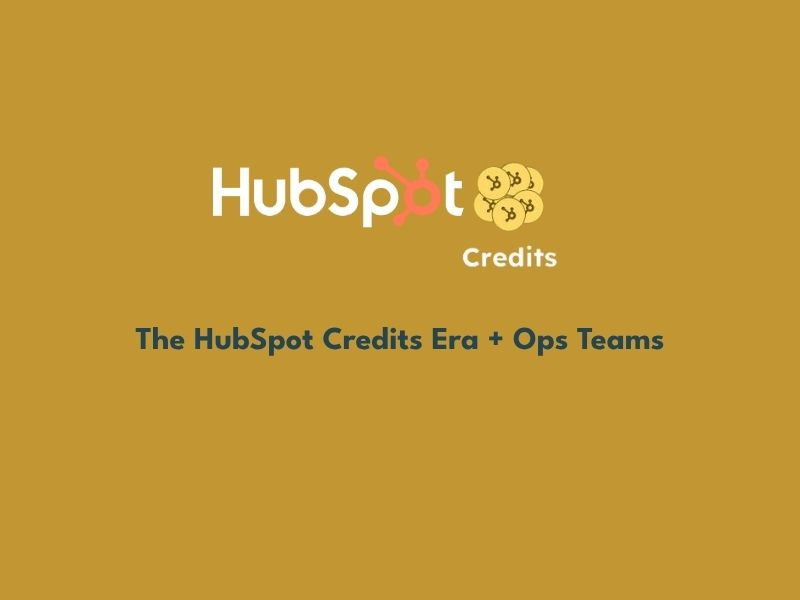They Won’t Just Find You: Demand Gen for PLG Startups
- Matt McDougall

- Jun 13
- 7 min read

Product-led growth doesn't exempt you from demand-gen. People don't just show up. That’s not how it works.
You might have an intuitive onboarding flow, a slick landing page, and a free tier that begs to be used. But even the best self-serve product still needs demand generation—especially in the early days.
At the seed stage (or even early Series A), PLG isn't about spinning up viral growth loops or automating your funnel. It's about laying a foundation that helps your product find the right people, helps those people get quick wins, and gives you clear signals about what's working.
The goal isn't scale. It's clarity on who your users are, what resonates, and how to do more of that without lighting your precious funding on fire.
We’re not going to waste your time pitching fancy frameworks or expensive tooling. This is your how-to guide for the scrappy, slightly chaotic, and actually effective process of early-stage PLG demand gen. Tactical basics, rooted in what we’ve seen work.
LFG.
1. Start Where the Product Already Shines
Here’s the trap: You launch a PLG product, get a handful of signups, and suddenly you’re building persona decks and planning out a 14-touch nurture campaign.
Slow down.
None of that stuff matters until you understand why people are actually showing up and what they’re getting out of it.
At this stage, demand gen should orbit activation. What’s the one feature, flow, or use case that turns a curious signup into an “okay wait, this is good” moment?
If you're not sure, you're not ready to scale. You're ready to investigate.
AI can actually be useful here. Tools like Mixpanel or PostHog can surface what features activated users engage with most. Even ChatGPT can help summarize onboarding feedback or support tickets (if you feed it the transcripts).
Don’t rely on AI though: talk to your users, manually tag behaviors, pattern-match in spreadsheets. Anything to figure out what’s clicking, and how to get more people to get to that click faster.
Mini Playbook: Find and Feed Your Activation Moment
Pull the data. Open PostHog, Mixpanel, whatever you’ve got. Look at users who came back 3+ times in the last two weeks. What’s the first thing they consistently touch?
Cross-check with feedback. Send a one-question email: “What was the first moment you realized [product] was worth it?” (Manual replies are fine. You want qualitative texture.)
Pick a single activation use case. Example: “People keep loving the export-to-CSV feature.” Cool. That’s your wedge.
Make it the hero. Write one blog post, one landing page section, and one email campaign just about that thing. Add a CTA that drops the user directly into it.
Tactic: Interview your most successful early users. Ask what they almost didn’t understand, not just what they liked. That friction is gold for refining your messaging.
2. Traffic Without Treadmills
Early-stage PLG demand gen is not a volume game. You don’t need a hundred thousand visitors. You need a couple hundred of the right ones. The kind who show up curious, poke around, and actually stick.
Which means: pick a couple channels, and go deep.
Not “we should do SEO” deep. Actually deep. As in:
Write three pieces targeting real use cases, not keywords.
Join the Slack/Discord/Reddit group where your audience already hangs out.
Test a paid search campaign pointed not at your homepage, but at your strongest feature.
Spray-and-pray is for later. Right now, you’re trying to understand what draws people in, who they are, and why they keep clicking around.
Mini Playbook: One Channel, One Use Case, Four Weeks
Pick a single use case tied to activation (see Section 1). Example: “Our spreadsheet import saves users 3 hours a week.”
Choose your channel. If your audience hangs out on Reddit, write a guide and share it in a relevant thread (ethically, please). If they’re on search, test a low-budget Google Ads campaign for “[X] spreadsheet tool.”
Send traffic to a purpose-built page. Skip the homepage. Build a landing page just for this use case. Add a CTA that gets them into the product right where the magic happens.
Track everything with UTMs. You need to know what actually drove signups.
At the end of four weeks, review:
Who showed up?
Who activated?
What would you try differently?
Bonus: Building in Public Can be a Force Multiplier
If you or your team are comfortable being online, this is the time to lean in.
Building in public isn’t about being loud. It’s about showing your work—what you’re shipping, what you’re learning, what’s breaking. It’s human. And it builds trust with early adopters faster than any brand ad ever could.
And it’s not just a founder thing. Let your PMs, designers, and engineers post on Twitter, LinkedIn, dev forums, whatever fits. The goal isn’t virality; it’s visibility in the corners of the internet your future users already hang out in.
One good post can bring you ten new signups. One useful thread can seed a channel for the next six months.
3. Make Onboarding a Growth Engine
In PLG, onboarding is the pitch. It’s not a follow-up. It’s not a nice-to-have. It’s the moment someone decides whether your product is worth investing their time in, or just another tab to close.
That’s why, in the early days, your job isn’t to automate onboarding. It’s to obsess over it.
Send the welcome emails yourself. Hop on onboarding calls. Watch screen recordings like you're looking for clues in a new episode of Severance. Ask new users what they expected to happen, and what didn’t.
Because what looks like a "retention problem" down the road is often just a missed moment in onboarding no one caught early enough.
Mini Playbook: Turn Onboarding Into a Feedback Loop
Pick 10 recent signups. Not your power users. Not the ones who churned immediately. The ones in the middle.
Email them something personal. Use a simple subject line, like “Quick favor?”, followed by something along these lines: “Hey! I saw you signed up for [product] recently. If you’re open to a 15-min chat, I’d love to hear what’s working and what’s confusing. We’re trying to make the experience smoother for new users, and your feedback would mean a lot.”
Record the calls. Use Grain, tl;dv, or Scribe. Don’t try to take notes and think critically at the same time.
Use AI to summarize and tag. Tools like ChatGPT or Claude can help you cluster feedback by theme: friction points, missing features, confusing labels, awkward flows.
Ship something based on what you learned. A tooltip. A copy tweak. A help doc. Doesn’t have to be big—it just has to show up.
Tell users what you fixed. That closes the loop. That builds trust. That turns onboarding into growth.
You can scale all of this later. But right now, you’re still figuring out what a successful user looks like. AI can help you spot patterns—but only after you’ve rolled up your sleeves and done the work by hand.
Tactic: Ask 3 questions at the end of your onboarding emails:
What were you trying to do?
What worked?
What was confusing?
Keep a running doc. Review it weekly. Prioritize what slows people down the most.
Keep the microscope on onboarding, and demand gen starts to get a lot easier. Because when people find value fast, they don’t just stick around. They bring others with them.
4. Your First Self-Sustaining Growth Might Be... Boring
When people talk about PLG growth, they usually jump straight to the flashy stuff: referral engines, viral loops, bottom-up enterprise expansion. Love that for them. But at the seed stage?
Your first growth loop probably won’t be sexy.
It might look like:
A dashboard someone shares with their boss.
A PDF export they send to a client.
A report link pasted into a Notion doc.
A user inviting a coworker to help finish a task.
Quiet. Unremarkable. And absolutely worth building around.
Because you aren’t looking for virality. You’re looking for repeatable behavior that brings new people into the product without needing you to keep pushing every time.
That’s a growth loop. You don’t need to call it that. Just recognize it, support it, and make it easier to happen again.
Mini Playbook: Spot the Loop, Reinforce the Habit
Map out what shareable actions exist in your product. Anything a user can send, export, invite, or publish.
Instrument the basics. Use product analytics to track who’s using those features—and whether recipients ever become users themselves.
Make those actions delightful.
Make exports prettier
Make links trackable and personalized
Add a soft nudge to “Invite your team” after value is delivered—not on day one
Use AI to identify patterns. Ask: What do users who invite others do beforehand? Are there behaviors that reliably lead to sharing?
Don’t force it. If nothing’s spreading yet, that’s okay. Go back to activation and onboarding. Growth loops feed on user success.
Your first loop won’t go viral. It won’t impress investors. But it’ll quietly start compounding. And that’s exactly what you want.
5. Get Foundational, Not Fancy
When early-stage teams start thinking about growth, there’s a temptation to overcorrect. You go from no data to trying to build out a full RevOps stack, multi-touch attribution, custom dashboards, and a half-baked CRM integration—all before hitting 1,000 users.
Let it go.
You don’t need sophistication. You need clarity. What’s working, what’s not, and what to try next.
That’s it.
Mini Playbook: The Bare Minimum Analytics Stack
Use UTMs. Seriously. It’s not optional. Add them to every campaign, post, and link.
Track the core funnel. Use Google Analytics (for traffic) + a product analytics tool (like Heap, PostHog, or Amplitude) to track:
Visits → Signups
Signups → Activation (your definition here matters)
Activation → Retention (weekly or monthly return rate)
Set a weekly review cadence. Don’t build a dashboard if you’re not looking at it. Block 30 minutes every Friday to check:
What drove signups?
Who activated?
What channel looked busy but produced nothing?
Write down one decision per week. Based on what you learned, what are you not going to keep doing? What will you double down on? Write it down. No vibes-only marketing.
Optional: Bring in AI. Use GPT or Claude to summarize onboarding feedback, analyze patterns in user dropoff, or cluster qualitative survey results. The machines may surface trends you’re overlooking.
Scaling too early is how you end up with dashboards that look impressive and tell you absolutely nothing. Focus on the signals that actually drive decisions.
Conclusion: Clarity First, Scale Later
Product-led growth isn’t magic. It’s not a cheat code. It’s not “build it and they will come.”
It’s a system. One that works; if you feed it the right inputs.
At the earliest stages, demand gen isn’t about big numbers. It’s about clean signals.
Who’s showing up?
What’s converting?
What’s keeping people around?
What’s falling flat?
You don’t need a 10-person growth team to figure that out. You need a solid foundation, a few focused experiments, and the discipline to learn fast without overengineering everything.
The tactics in this guide are built for where you are now, and where you’re trying to go. Get the basics right, and when it’s time to scale, you’ll actually be ready.
Need help building that PLG foundation?
Launchwave helps early-stage startups set up smart, scalable marketing foundations that evolve with your product—not just your pitch deck.




Comments